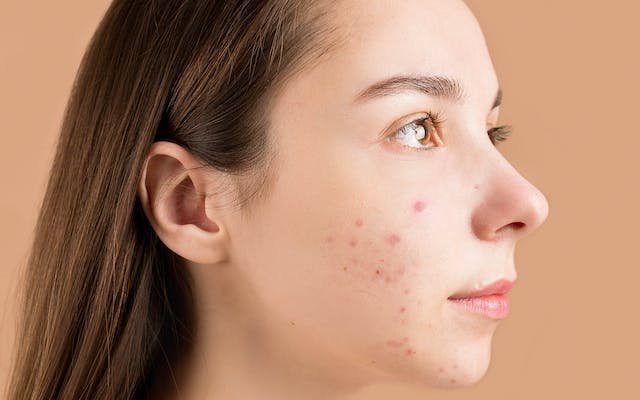Introduction
Acne is a common skin condition that affects millions of people worldwide. It’s not just a teenage problem; adults can experience it too. Understanding the causes and types of acne is crucial for effective treatment and management.

What is Acne?
At its core, acne is a disorder of the hair follicles and sebaceous glands. These glands secrete an oily substance called sebum, which helps to keep our skin hydrated. When these follicles get blocked, it leads to the formation of acne.
Causes of Acne
Hormonal Changes
Hormones play a significant role in acne development. Androgens, a type of hormone that increases in boys and girls during puberty, cause the sebaceous glands to enlarge and produce more sebum. Hormonal changes related to pregnancy and the use of oral contraceptives also can affect sebum production.
Diet
Recent studies suggest certain foods, particularly those high in carbohydrates and dairy products, might worsen acne. Foods with a high glycemic index can trigger hormonal fluctuations and inflammation, both of which can exacerbate acne.
Stress
While stress doesn’t directly cause acne, it can worsen the condition. Stress triggers the release of cortisol, a hormone that can increase sebum production and inflammatory responses.
Genetics
Genetics also plays a role in acne. If both parents had acne, you’re more likely to develop severe acne at an early age.
Medications
Certain medications can provoke acne as a side effect. These include drugs containing corticosteroids, testosterone, or lithium.
Environmental Factors
Pollution and high humidity can block pores and worsen acne.
Types of Acne
Understanding the types of acne is essential for effective treatment.
Non-Inflammatory Acne
Blackheads (Open Comedones)
These appear as small, dark spots on the skin due to an open, clogged hair follicle. The darkness isn’t dirt but oxidized sebum and skin cells.
Whiteheads (Closed Comedones)
These are small, flesh-colored bumps due to hair follicles clogged by oil and dead skin cells.
Inflammatory Acne
Papules
Small, red, raised bumps caused by infected or inflamed hair follicles.
Pustules
Papules with pus at their tips, often red at the base.
Nodules
Large, painful, solid lumps beneath the surface of the skin, formed by the accumulation of secretions deep within hair follicles.
Cysts
The most severe type of acne, these painful, pus-filled lumps beneath the surface of the skin can cause scars.
Conclusion
Acne is a multifaceted skin condition influenced by hormonal changes, diet, genetics, and environmental factors. Understanding its causes and types is the first step toward effective treatment and achieving clearer skin. Managing acne often requires a combination of lifestyle changes, skincare routines, and, in some cases, medical treatment. Consulting with a dermatologist can provide personalized advice and treatment options tailored to individual skin types and acne severity.
Also Read: Naturally Remove Acne Scars in a Week
